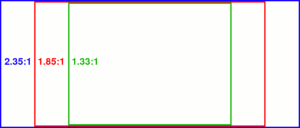So many ‘rules’ and guidelines govern photography, including landscape photography. However, the all-important choice of aspect ratio ‘enters the picture’ as only an afterthought during post-processing. Instead, the aspect ratio ought to visualized at the time of taking the photograph in order to maximize your chances of nailing an appealing landscape. That is Elliot Hook’s premise in Aspect Ratios in Landscape Photography.
From this position, Hook proceeds to take the reader through generally-accepted aspect ratios. He explains the effects each has upon the eye and perception and also what the strengths are of each.
Note that Hook’s tutorial is about “Landscape Photography.” As such, aspect ratiosthat are higher than they are wider (what you get by turning the camera 90 degrees) ar
not discussed in any detail but are mentioned at the end. That doesn’t mean you cannot or should not use a portrait orientation for a landscape. A minority of situations in landscape photography – e.g. cliffs, gorges, waterfalls – lend themselves to a portrait orientation. Pronounced vertical aspect ratios can heighten dramatic impact.
Starting with a 1:1 ratio – a square – Hook says that it can be used to “give a subject a striking presence at the centre of the frame” and that it “lends a good opportunity to break the rules we so often follow.” Simply trying out Hook’s recommendations will easily prove their worth.
Hook differentiates between different ‘landscape format’ aspect ratios. He says that relatively narrower ones, like 4:3, are useful when wants to lead the eye from the foreground to the landscape itself. In contrast, wider aspect ratios like 16:9 (and even wider) invite the eye to travel horizontally – ‘sweep’ the image. They are best used to represent a ‘pure’ landscape; a distant scenic panoramic view.
Another element is also in the mix: focal length. Hook associates each aspect ratio not only with what photographic material it will work best for, but also with suitable and appropriate focal lengths. For instance, he suggests using “longer focal lengths” for images with a 16:9 aspect ratio. This article provides many similar guidelines.
Tags: Aspect Ratio, Landscape Photography, orientation




















